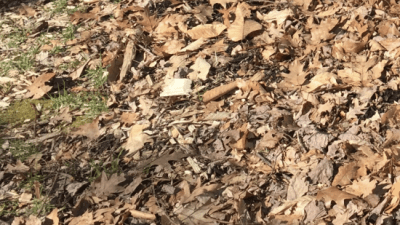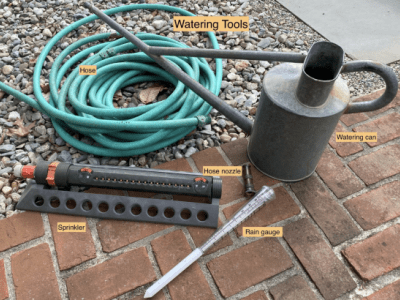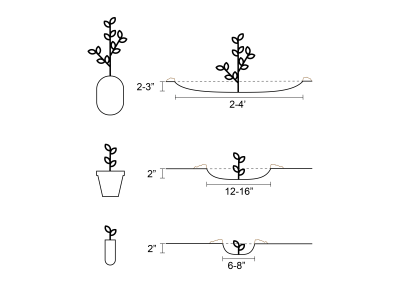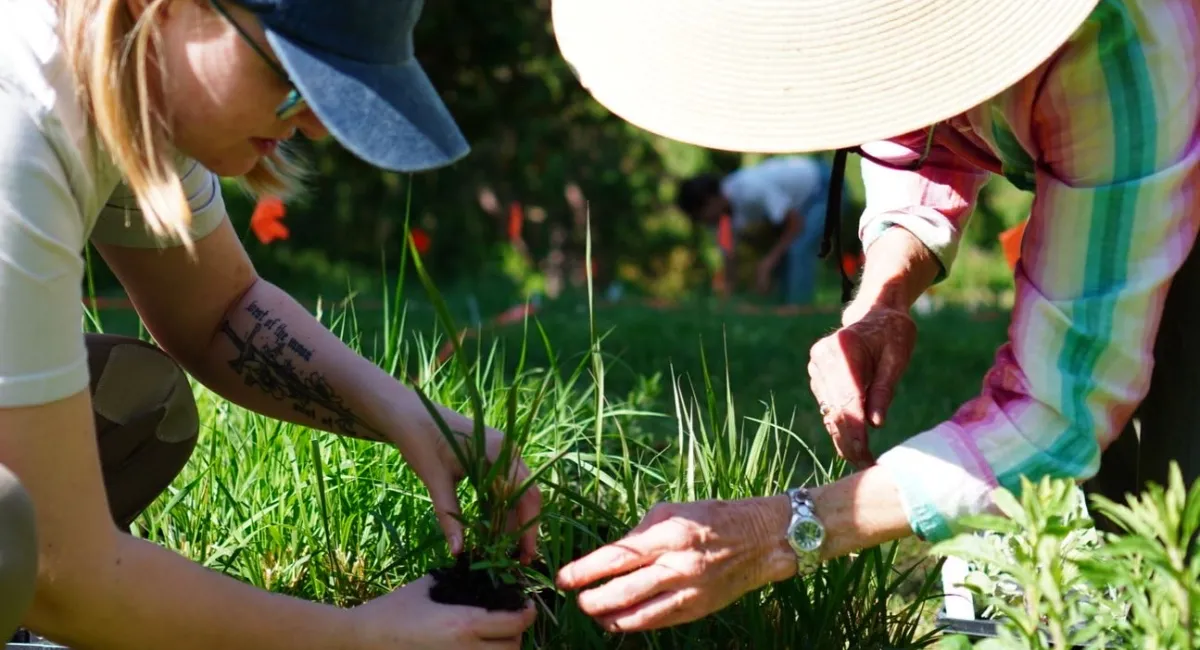Mulch and Compost
New plantings that replace regularly mowed and leaf-raked lawns typically require adding a layer of compost and *arborist wood chips to jump start beneficial fungal/soil biota activity and add organic matter and nutrients. Chips from hardwoods are preferred to pines, etc.
Woodland edge and moist meadow natural communities typically have high organic matter from leaf litter or dense meadow vegetation respectively. When rewilding shaded or soggy lawn sites, layer 2-3 inches of compost followed by 1-2 inches of wood chips to mimic these conditions. In future years, leave the fallen leaves, stems, branches, and deadwood in place.
Sandy sites and thinly soiled outcrops are naturally lower in organic matter and nutrients. When re-wilding these areas, layer 1 inch of compost followed by 1-2 inches of hardwood chips. These drier plant communities won’t thrive with excessive nutrients but need a starter boost in their first year.

This Mulch Guide from Brooklyn Bridge Park is an excellent summation of the pros, cons and subtleties of using mulch, including sheet mulching.
*Here’s more in-depth information on the benefits and types of hardwood chips: Ramial Chips - Maine Organic Farmers and Gardeners.
Watering
Although established native plants rarely need watering, ensuring they get consistent water their first year is important to develop deep drought tolerant root systems. Newly planted trees need our help for the first 2-3 years!

Use a rain gauge or a level straight-sided container to measure rainfall. If it records 1 inch a week, no watering is needed.
When installing your new plants, shape a level bowl around their stem for watering their root zone. Be sure this area is well soaked to a 4-6 inch depth. New large leafy plants may require more water since those leaves will be transpiring water back into the air.

2-4 feet+ for shrubs and trees which will need 5-20 gallons of water, depending on their size, to encourage deep rooting. Tree gator zip-up watering bags can be helpful.
12-16 inch diameter for gallon and larger pots.
6-8 inch diameter bowls for plugs or small pots.
Observe how your plants respond so you can figure out their needs.
It's better to water late in the day so the water soaks into the soil in the cool of the evening vs. evaporating quickly in the midday sun.

